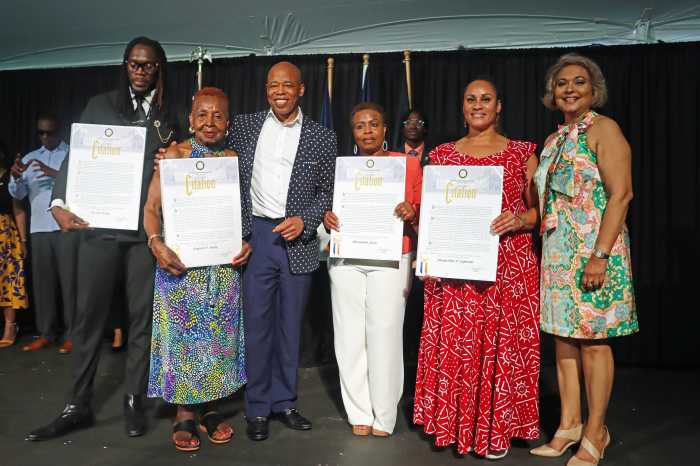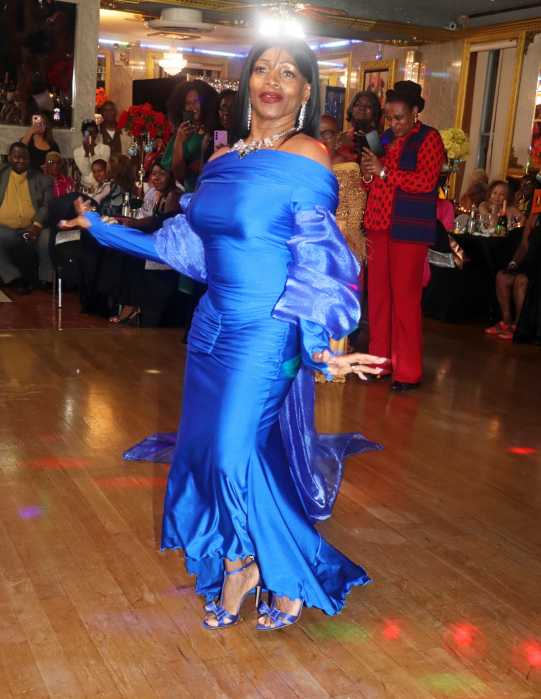In a New York Times review in 2009 of the documentary film “Carmen & Geoffrey,” about multifaceted Geoffrey Holder and his wife, the dancer/choreographer Carmen de Lavallade, Stephen Holden wrote that given Holder’s awesome accumulation of talents, along with de Lavallade’s impressive resume, you wonder why they were not more widely recognized as “national treasures.”
Holden mentioned the marginalization of the world of dance, as well as race, as perhaps contributing to this. And he asked: “What does it say about our culture that Mr. Holder is probably best known as the voice of the ‘uncola’ commercial for 7 Up?” To the Times’ credit, not giving Geoffrey Holder his props wasn’t about to be a charge laid at its door. Its full-bodied obituary when Holder died last Oct. 5 was altogether reflective of the “national treasure” esteem in which he was held.
It would be difficult, if not downright impossible to find anyone in arts and entertainment as gifted in as many disciplines as was Holder: dancer, choreographer, costume designer, set designer, director, painter, sculptor, actor, singer, composer. He achieved his most notable acclaim when he won Tony Awards for directing and costume design for “The Wiz” in 1975. He also earned a Tony nomination in 1978 for costume design in “Timbuktu!” Early in his U.S. residency, he had been the recipient of a Guggenheim fellowship in painting. But except for these and other acknowledgments of his creative strengths that would have been brought to the public’s attention, Holder largely did not gain the kind of recognition, outside of the arts community, commensurate with the enormous contribution he made on several fronts. There was no doubt, however, as to his place as one of the leaders of the pack among Caribbean émigrés in the U.S. who staked a claim in the arts and proceeded to excel.
Born and raised in Port of Spain, Trinidad, Holder was greatly influenced by his older brother Boscoe, who had himself developed an interest in the arts and had formed a dance troupe of which Geoffrey, at age seven, had become a member. Assuming leadership of the Holder Dance Company after Boscoe left for England, Geoffrey proved himself eminently suited to the challenge. While performing in St. Thomas in 1952, the troupe was fortuitously seen by and impressed the noted American choreographer Agnes de Mille. Two years later, de Mille arranged for Holder and his troupe to come to New York — a move that resulted in Holder getting his first taste of Broadway, playing a character and doing choreography for the musical “House of Flowers,” which opened in December 1954. Holder’s influence was the impetus for another Broadway first associated with the Caribbean-themed “House of Flowers,” when a steel band was added to the music featured in the show.
Holder taught for a while at the famed Katherine Dunham Dance School and he also landed a gig for two years as a principal dancer at the Metropolitan Opera Ballet. Other Broadway gigs, besides “The Wiz” and “Timbuktu!” included “Waiting for Godot” and the Josephine Baker musical revue. He also appeared in the Gershwin musical “Rosalie” onstage in Central Park. Perhaps the most significant affirmation of Holder’s work in dance was that pieces choreographed by him have become permanent repertory selections for two distinguished companies, the Alvin Ailey American Dance Theater and the Dance Theater of Harlem.
Holder was tapped for a number of films, including the James Bond thriller “Live and Let Die,” “Doctor Dolittle,” “Annie,” “Everything You Always Wanted To Know About Sex,” “All Night Long,” “Krakatoa, East of Java,” “Swashbuckler” and “Boomerang.” In addition, his paintings always lent further validation to Holder’s prodigious creative output. Apart from commercial success, he had the honor of his paintings being given auspicious showings by, among others, the Guggenheim Museum in New York and Washington’s Corcoran Gallery. The quintessential multi-tasker co-wrote and illustrated a book on Caribbean folklore. And in the 1970s he also wrote a Caribbean cookbook.
Loaded with talent, Holder did not lack either for the self-assuredness he considered essential to making his mark in an America so many found daunting. Arriving in this country when still in his early 20s and well aware of social problems plaguing his adopted home that could be challenging, Holder steeled himself in the belief that he belonged — that whoever thought otherwise, the problem was theirs, not his. Given how it turned out for him, the Holder credo seems to have worked just fine.




















